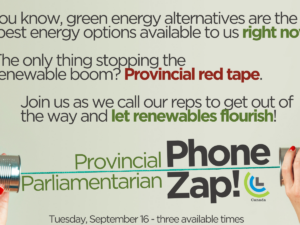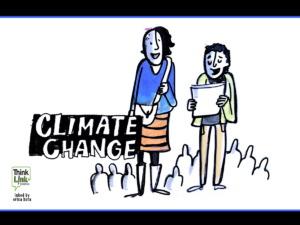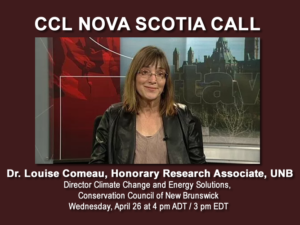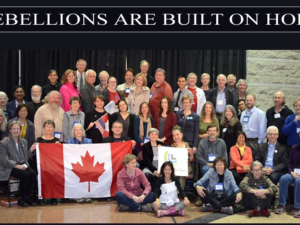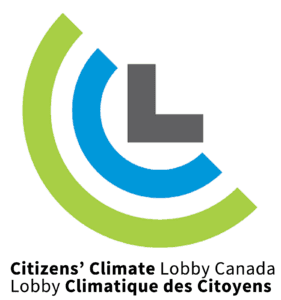–March 31, 2017– Since 2011, Citizens’ Climate Lobby Halifax/Nova Scotia members have been lobbying their provincial and federal levels of government for carbon fee and dividend: a national, upstream, and incrementally rising carbon tax where 100 percent of the money is returned to citizens on an equitable basis. Pricing carbon emissions is one of the most powerful incentives that governments have to encourage companies and households to pollute less by investing in cleaner technologies and adopting greener practices. In December 2016, the provinces and territories agreed to an overarching national carbon pricing policy. The provinces and territories can choose which carbon pricing system to use. Nova Scotia has chosen a cap and trade system. The Nova Scotia government has taken a first tiny step toward putting a price on carbon to ensure a healthy climate for us and future generations. The national minimum carbon price starts at $10 per tonne in 2018 and rises to $50 per tonne in 2022. However, $50 per tonne won’t be enough to meet Canada’s goal of reducing emissions to 30% below 2005 levels by 2030 and our current goal is woefully inadequate. Nova Scotia has already met this goal partly because we started as high emitters in 2005. If every country adopted Canada’s targets, this would not keep warming below 2oC. In short, we are off to a great start, but we must do better. ● The proposed system would allocate carbon allowances to most emitters at no cost. They could trade among themselves but no or very little revenue will be generated for the government to use to offset higher costs for consumers or smaller businesses or to incentivize other possible reduction activities like conservation. This is a very weak system. ● NS received an exemption from the federal goal of closing coal-fired plants by 2030. The Cap & Trade program proposes to include NS Power plants. Nova Scotia Power, whose emissions constituted 44% of all NS emissions in 2014, is by far the largest source of GHG emissions in NS, mostly due to coal-fired plants. How the exemption and the Cap and Trade system will affect each other must be made clear. It is essential that the Cap and Trade program is not kept weak to enable coal plants to stay open longer.” NOTE: Source re. electricity as 44% of NS GHGs = Canada’s 2016 National Inventory Report, 1990-2014: Greenhouse Gas Sources and Sinks in Canada, 1990–2014 Canada’s Submission to the United Nations Framework Convention on Climate Change, Part 3, pp 41 & 91. Based on 2014 data, NS’ electricity sector produced 43.6% of NS’ GHGs. National inventory submissions 2016 link ● Keeping the regressive affordable energy rebate also eliminates the incentive to conserve. Preferable would be a carbon fee and dividend with monies returned to low and middle income households as a reward for using less energy than high income households. In this scheme the lowest income households would come out ahead and the middle class would break even. ● For the carbon price to reduce emissions significantly, it must continue to rise past 2022 and reach at least $150 per tonne by 2030. A carbon price of $150 per tonne would increase the cost of living throughout most of the 2030’s by approximately $2,000 per person per year. ● For long-term viability, the carbon pricing policy must be as bullet-proof as possible against populist and cynical attacks. There has to be a broad-spectrum of political will for the carbon pricing policy. See below for how this can be done. ● There is unclear equivalency between carbon tax and cap and trade prices. ● Complexity, lack of transparency, transaction and administrative costs, additionality of offsets, and price volatility: the latter especially discourages investment and innovation. ● Emission intensive and trade exposed sectors of the Canadian economy deserve Border Tax Adjustments in preference to free allocations. ● Transparency and reporting the cost of compliance with the Cap & Trade system needs to be published regularly for citizens. ● That the carbon price be economy-wide and continue to rise past 2022 to $150 by 2030 with the objective of Canada exceeding our Paris targets and becoming a world leader in tackling the climate crisis and in the clean tech industry. ● To abate populist and cynical attacks, the rising carbon price should not impose any additional burdens on low and middle-income Canadians. We recommend revenue neutrality and that the current cap and trade policy morph into either a cap and dividend program and/or carbon fee and dividend. ● We need unprecedented cooperation between the federal government, provinces, and territories. They must continue to meet openly and regularly and at the soonest possible date determine the price equivalencies between carbon taxes and cap and trade as well as start planning in earnest carbon pricing beyond 2022. ● When the province of Nova Scotia meets with their federal, provincial and territorial counterparts, Nova Scotia should support the ending of financial subsidies to fossil fuel companies. ● Now that we have a national carbon pricing policy, to level the playing field for businesses that are emissions intensive and trade exposed, the Province of Nova Scotia needs to support Border Tax Adjustments with international jurisdictions without a similar carbon price. ● The cap and trade program does not directly cut GHG emissions in Nova Scotia in a scientifically sound manner and/or there is a lack of political will for the program – enact carbon fee and dividend. Climate and energy are highly connected and complex files. We are here to help. Additional constructive suggestions and criticisms from Nova Scotians: Regards, Sincerely, Big thanks to Joanne Light for her leadership in creating a document that highlights how woefully inadequate Nova Scotia’s GHG emissions target are and for offering specific suggestions to make Nova Scotia’s climate plan better. Special thanks to Brian Gifford, Andy Blair, and Peggy Cameron for working on the drafts with Joanne and Peter Bateman for submitting the final document to the Government of Nova Scotia. OPEN LETTER: Request For Nova Scotia’s Carbon Price To Go Upward And Onward
Our key concerns:
● The system announced does not cover all emitting sectors – but it should if policy-makers want to avoid costly ‘leakage’. Free allocations and thresholds must be gradually phased out.
● The proposed NS system would be for NS on its own. It would not be linked to any other Cap and Trade system. This will make it difficult if not impossible to establish a “market” for carbon because we are too small.The simple steps needed:
Joanne Light
Group Leader CCL Halifax,
902-429-1571
OPEN LETTER: Request For Nova Scotia’s Carbon Price To Go Upward And Onward
Home » CCL Canada News » OPEN LETTER: Request For Nova Scotia’s Carbon Price To Go Upward And Onward
OPEN LETTER: Request For Nova Scotia’s Carbon Price To Go Upward And Onward
Posted on April 3, 2017 in Open Letter



